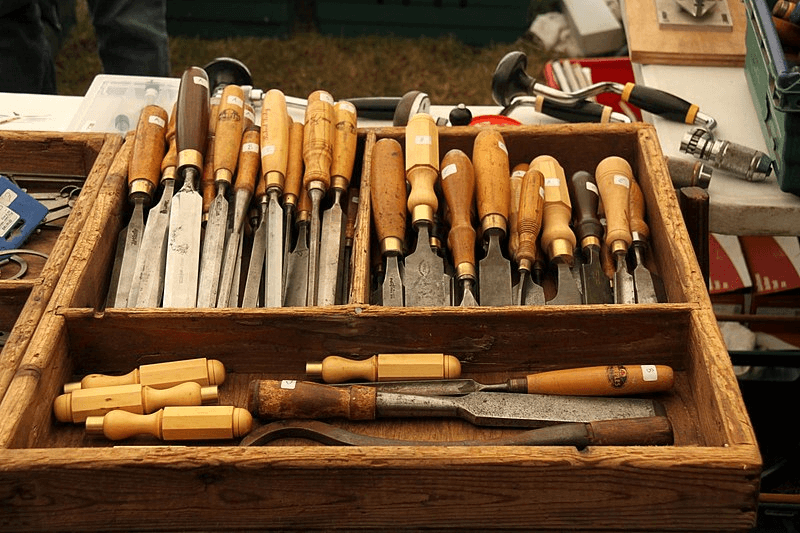
On the homestead, there’s a host of different tools that you need. Many of these have at least one blade, and some may look like they are the same tool or close to it. The truth is they might look similar but have completely different uses. And that is the point of this article – to help you understand the different bladed tools on the homestead and how to use them.
Axe-Type Tools
In this category are those tools that most people would look at and say “That’s an axe.” Most axes are single-bit axes, which means they have one cutting edge. However, there are also double-bit axes. These axes, obviously, have two cutting edges.
Felling Axe
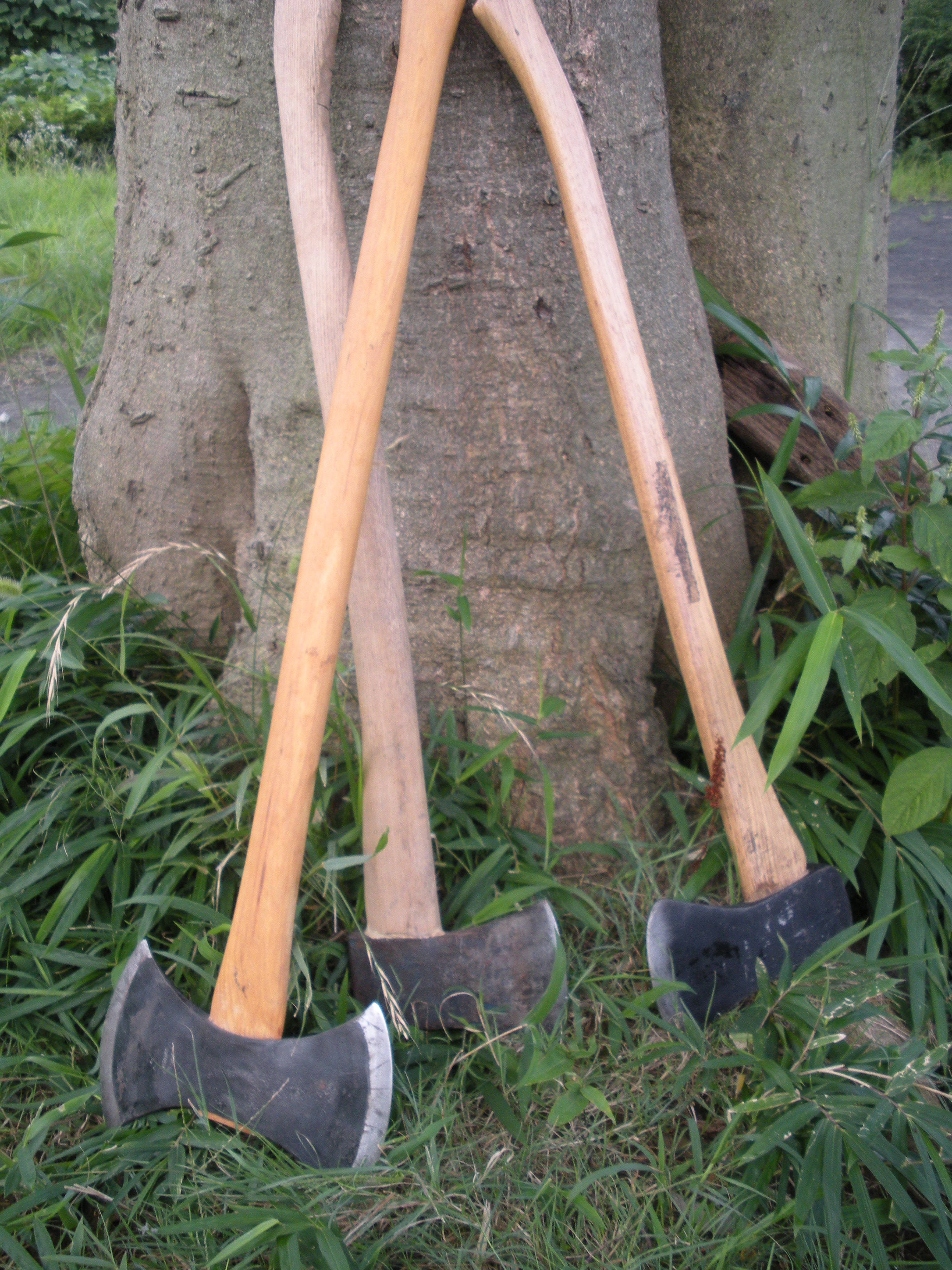
These are the large axes that you use to cut down trees. They are usually 26 to 30 inches long and have a medium weight single-bit head (although you can get a double-bit one if you prefer). These blades are kept sharp with a fairly thin edge to really bite into a trunk with minimal effort. You strike the tree at a slight angle rather than directly perpendicular to the surface of the tree. Generally, you strike with a slight angle from above and then a slight angle from below that meets your first cut. This knocks off a big chunk, and doing this repeatedly makes quick work of getting through wood.
Hatchet

Basically a small axe. It has a lighter weight single-bit head and a shorter handle. This makes it far more portable than a full-size axe which is why a hatchet is often taken on camping trips. It is handy for cutting down small trees and brush, cutting up sticks for making a campfire. Some are even used for wood carving.
Broad Axe

A broad axe is a tool that can only be found in antique malls and specialty suppliers online. Unlike other axes, its blade is usually very wide and has a single bevel edge. That means it is flat on one side; in some sense, this shape makes it a huge chisel. As such, it is used for hewing wood. Most often it squares large timbers for use in building structures.
Splitting Axe
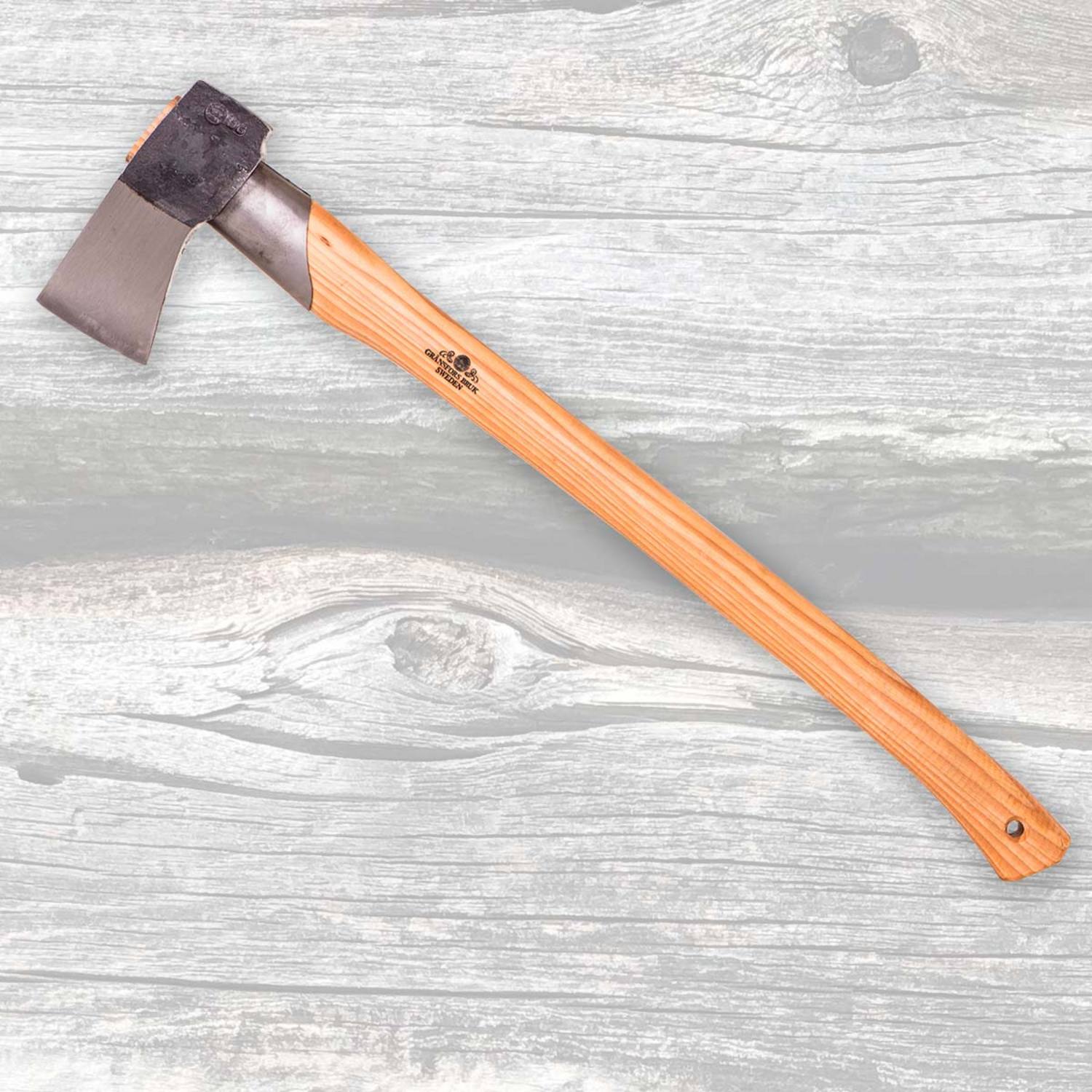
A splitting axe is generally heavier and longer than a felling axe. Often, they are around 36 inches long which gives them extra “oomph” when splitting wood. The extra weight of the head also allows them to break apart wood easier. Sharpness is not as important with a splitting axe because you are not cutting wood, you are forcing it apart with the grain. Many splitting axes have modified heads that make them act even more like a wedge.
Splitting Maul

When it comes to splitting wood rounds into firewood, the maul is king. Of all axe-type tools, it has the heaviest head. This weight helps drive it into the wood round to split the wood. The edge has a wider angle that flares out quickly and acts like a wedge to break apart the wood. Mauls usually have a hardened back end of the head that can be used as a sledge hammer to drive wedges into really tough wood.
Pulaski

C0nsumer//Wikimedia CommonsA Pulaski is basically a double-sided axe where the edges are oriented perpendicular to each other. This design makes a Pulaski basically the best tool you got for digging trenches where there are lots of tree roots, or getting out a stump and rootball. In the ground, the roots go every which way, so the heads at different orientations are a huge benefit.
Adze

A tool that doesn’t get much use in modern times, the adze was used to smooth up and square a timber. To use it, you would stand on top of a piece of wood and swing it into the wood right in front of you. It was quite dangerous as a miss-strike would put it right in your foot. However, a professional could get a timber nice and smooth with this tool.
Chisels
Paring Chisel

These are your basic woodworking chisels. If you have a drawer of chisels in your workshop, they are probably paring chisels. These chisels have a single bevel and must be kept razor sharp to function properly. If sharpened correctly, they should only require hand pressure to pare away wood a bit at a time. They can be struck with a mallet if needed (helpful for defining the edge of a cut – like for hinges).
Mortise Chisel
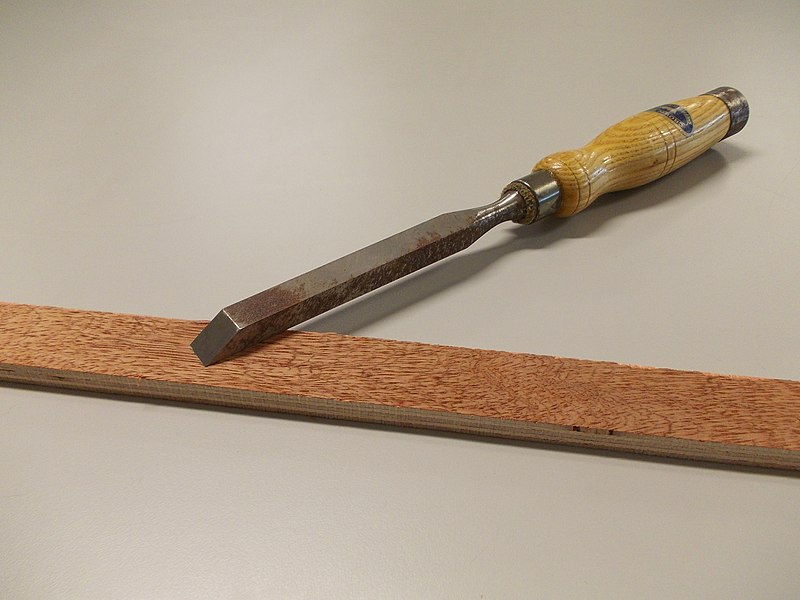
The mortise chisel is noticeably thicker than the paring chisel. In cross-section, they form a rectangle as opposed to a paring chisel’s trapezoidal cross-section. These chisels were made for making mortises – holes in wood through which a tenon fits. As with a paring chisel, its single-bevel edge must be kept razor sharp. These tools are almost always used with a striking mallet and they are robust enough to pry pieces of wood from the mortise.
Cold Chisel

These are for metal work – cutting cold metal. They are nowhere near sharp enough to effectively cut wood, but the dullness of their edge makes them perfect for cutting any metal softer than the chisel without chipping the blade. These chisels are struck with a mallet or hammer in order to bite into the metal they are cutting.
Masonry and Brick Chisels

These are specifically for cutting stone, brick, and other masonry. Well, “cut” may not be the most appropriate term as they actually score the masonry. Once scored, the masonry is struck and should break along the scored line. These chisels are struck with a small sledge, so many have a plastic or rubber guard to protect your hand from overstrikes.
Saws
There are many types of saws: hand saws, wood saws, coping saws, and circular saws – probably enough for their own article. All saws can generally fall into one of two categories, crosscut or rip, and those are the two I will cover here. Both sorts of saws can be purchased with different numbers of teeth per inch (tpi) with the smaller numbers of tpi being for faster and rougher cuts while the larger number of tpi being for slower and smoother cuts. They vary in overall length from ones that will fit in your tool box, to long saws that will need to be hung on a wall.
Crosscut Saw

A crosscut saw is for cutting wood across the grain. This is the most common type of handsaw sold at home improvement stores as crosscutting is the most common action in rough carpentry. You are crosscutting when you are cutting an 8-foot two-by-four to length, for example. The teeth on a crosscut saw act like tiny knives, and they slice through the fibers of the wood.
Rip Saw

A rip saw is for making rip cuts – cutting with the grain of wood. Such cuts are occasionally made during rough carpentry, but they are common in finer carpentry jobs like in joinery. The teeth on a rip saw are often described as tiny chisels, and that is how they function as they cut the wood.
Other Tools
Machete

This is a big knife – generally between 18 and 24 inches long. Its double-bevel blade needs to be kept razor sharp to function effectively. It excels at cutting through undergrowth in the woods or jungle. It can cut down small trees easily, and it slices right through small branches off a main stem or trunk.
Scythe
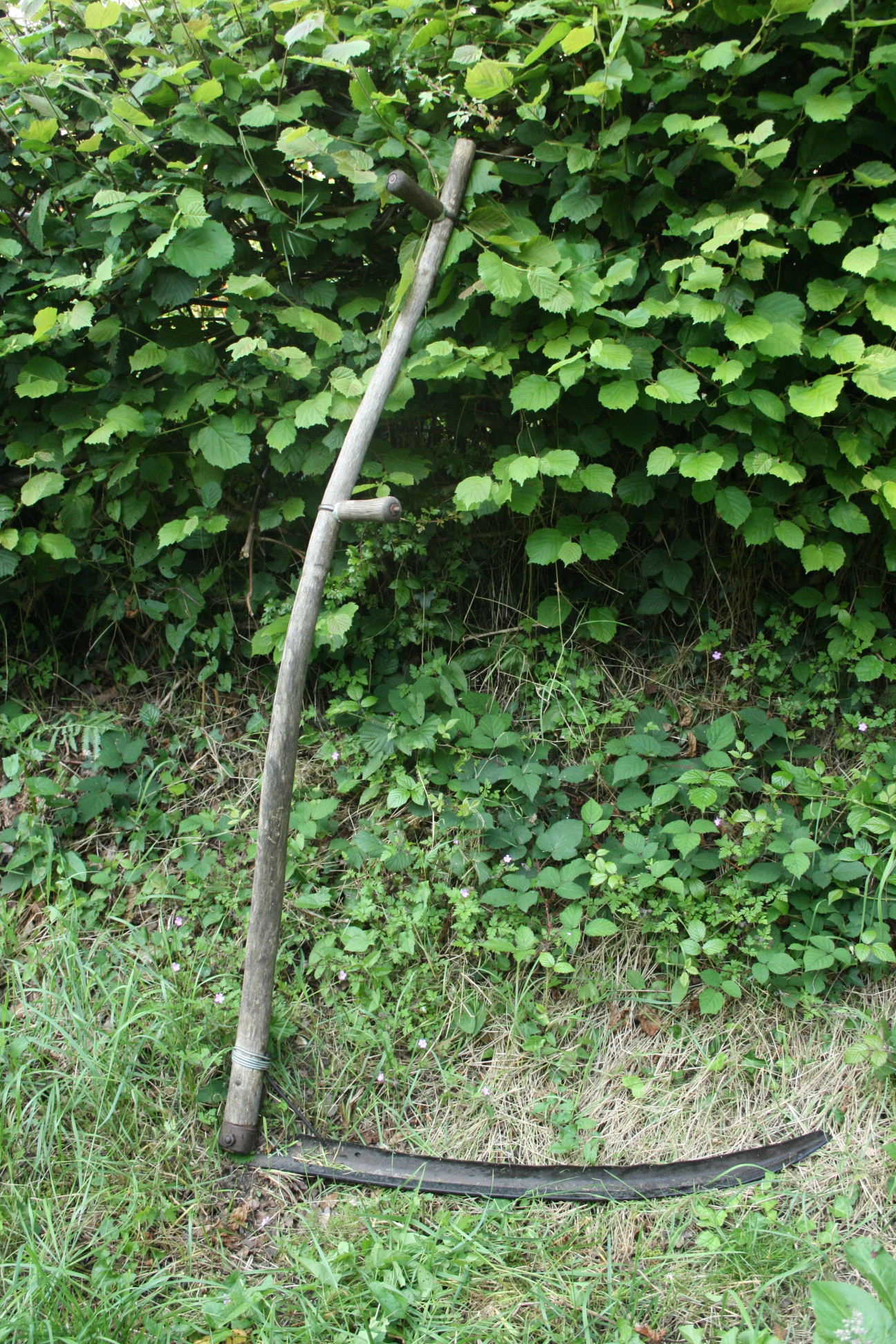
A scythe is the perfect tool for cutting grasses, and with the right blade, small diameter overgrowth. A scythe is made up of two parts: blade and snath. The snath is the long, curved handle that you hold as you swing the tool. The blade, also curved, must be attached to the snath at just the right angle to cut grass efficiently. In the past, they had attachments that made various tasks easier, such as a cradle that would catch and pile up the wheat at the end of your strokes.
Ditch Bank Blade
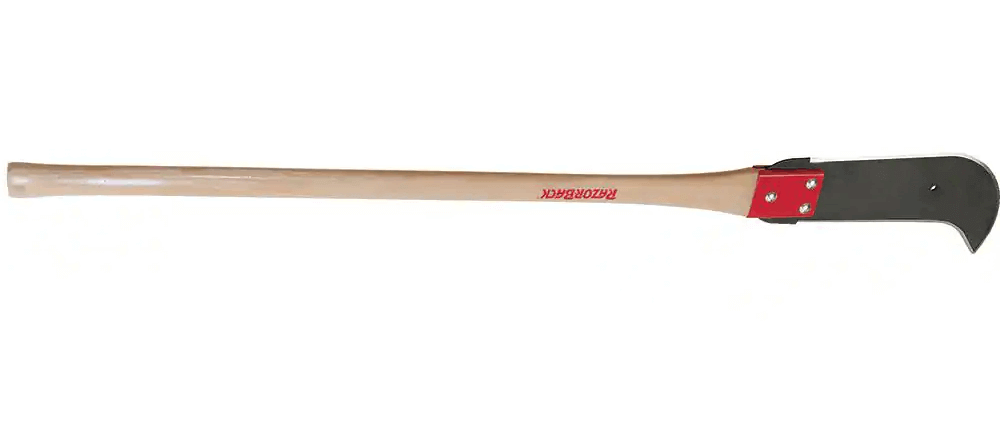
This is a specialized tool for cutting overgrowth on steep land. It can be difficult to get power equipment into a ditch or onto steeply sloped land, and it can be hard for a human to navigate in a ditch or crawl up a steep embankment. That is where the ditch bank blade comes in handy. It has a robust blade with a slight curve on the end of a long handle. Each side of the blade is sharpened but they are used differently. The blade’s outside curve is for swinging, and the inside is for hooking and pulling to slice through a thick stem.
Conclusion
So there you go — a brief rundown on many of the bladed hand tools you will find on a homestead. Hopefully, you will now be able to tell the difference between tools that may look similar on the surface. All of these tools were developed over the course of time to make a certain task a bit easier, and they still make life a lot more convenient today.




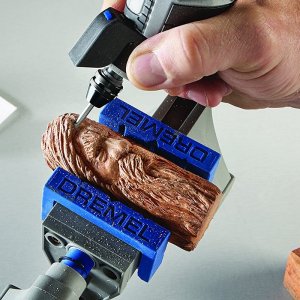





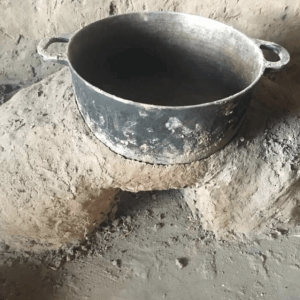












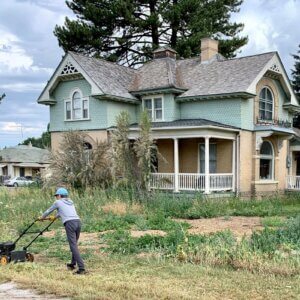








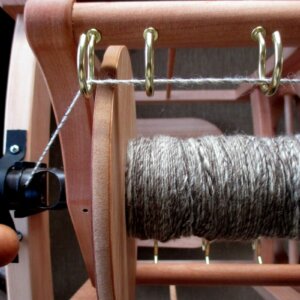









Leave a Reply